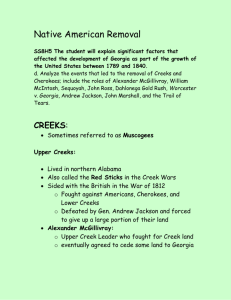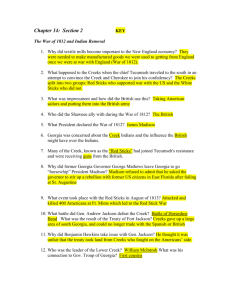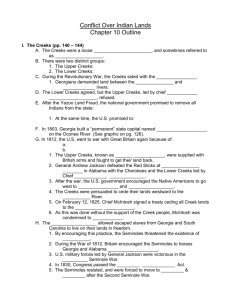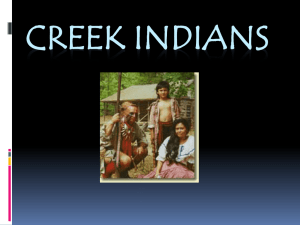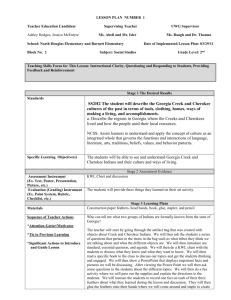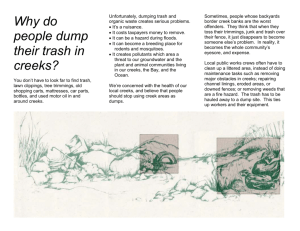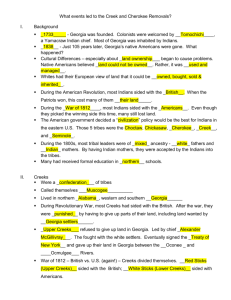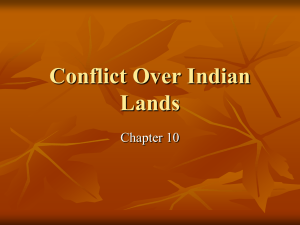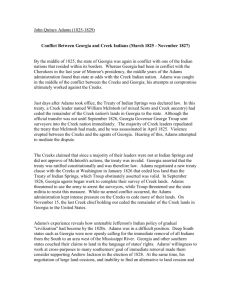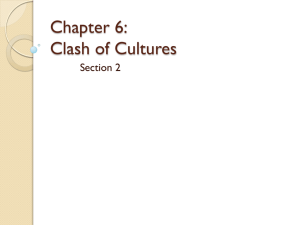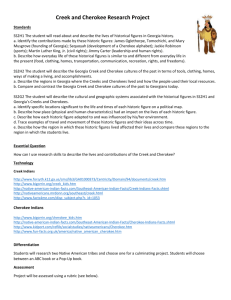Cherokees and Creeks
advertisement
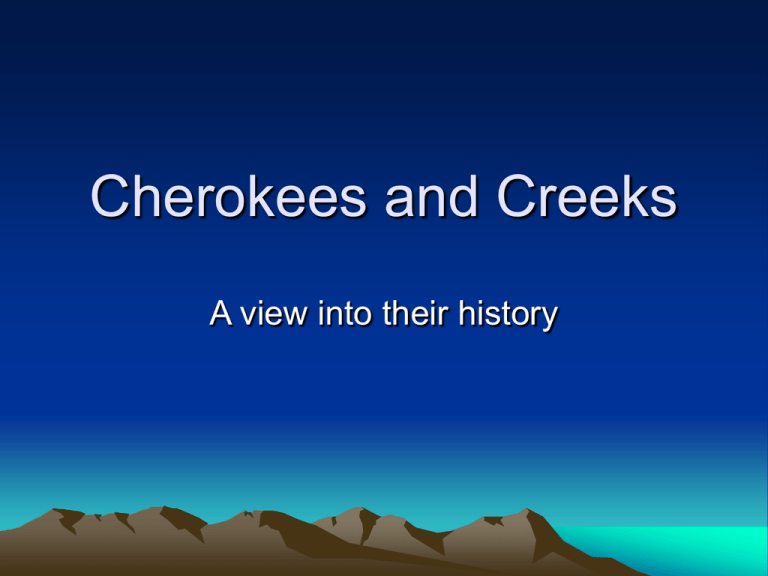
Cherokees and Creeks A view into their history Cherokees • The Cherokees’ houses were made of rivercane and plaster. • Chiefs were men and landowners were women. • War chiefs were men, but the peace chief could be a woman. Sequoyah • Sequoyah created the Cherokee syllabary, which enabled the Cherokees to read, write, record their laws, and publish newspapers in their own language. Cherokees • During the 1800’s the US government created an Indian Territory in Oklahoma. • In 1839, US troops expelled the Cherokee from their ancestral homeland in the Southeast to this Indian Territory. • This was known as the Trail of Tears. Creeks • The Creek Indians often fought with the Cherokee Indians. • The Creeks formed the Creek Confederacy as a defense. • They lived in an area near the Ocmulgee Creek. Creek Indians • The Creeks homes were also built of rivercane and plaster. • When the Creek population reached about 400-600 people they would split and half would move to a nearby site. Creek Removal • Creeks avoided the American revolution, but their lives changed afterwards. • Georgia viewed the Creeks as impediments to the expansion of slavery. • In the Treaties of New York(1790), Fort Wilkinson(1802), and Washington(1805) the Creeks ceded their lands east of the Ocmulgee River. Creek Removal • The Treaty of Indian Springs of 1825, is when Georgia agents bribed Creek leader William McIntosh to sign away all Creek territory in Georgia. • The Creeks were furious with the Creek leader and put McIntosh to death for his treachery. Research • Using the websites listed we will now research more about the Cherokee and Creek Indians on the internet. • Then we will create a graphic organizer on Inspiration listing the details that we learned about them. • Finally we will create a Venn diagram using Inspiration that compares and contrast these Native American cultures.
